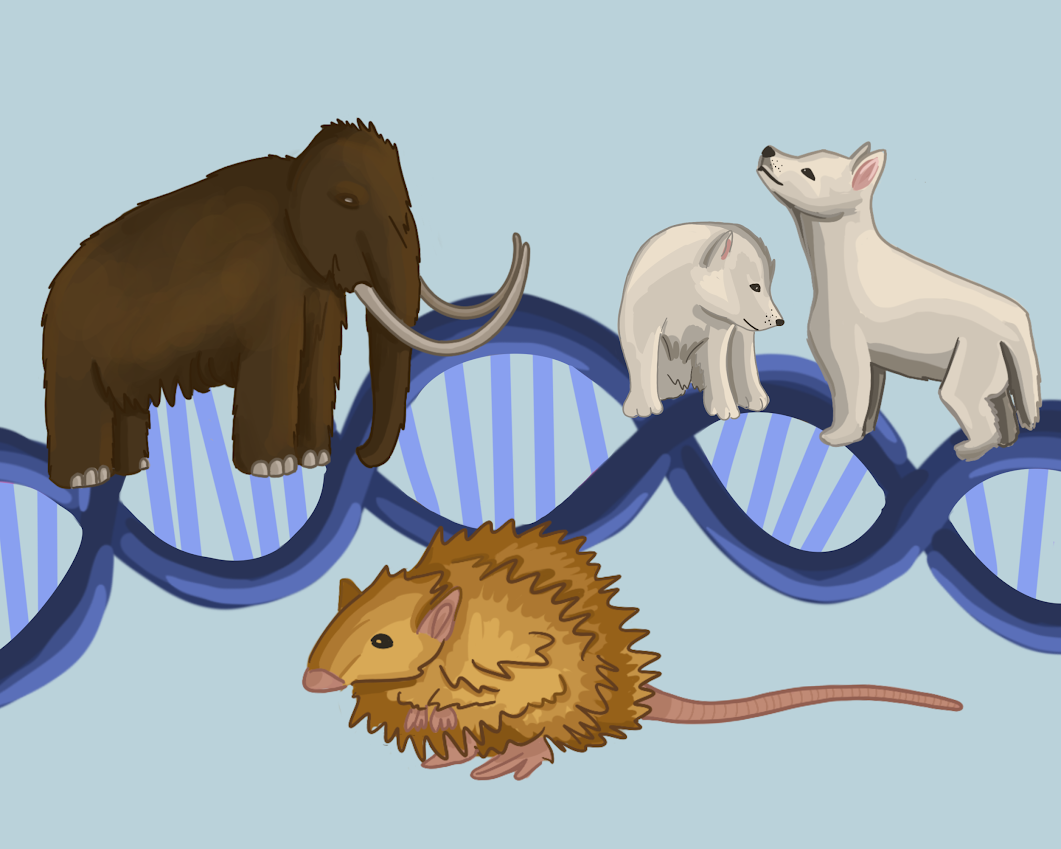Jurassic Park may not be the dystopian future we fantasized about; It might just be closer to our reality than we previously thought possible. New scientific discoveries explore boundaries that have yet to be crossed. Permanent extinction could not be a problem for our planet in the near future.
Colossal Biosciences is a genetic engineering company working towards bringing species back from extinction. Ben Lamm and George Church co-founded Colossal in 2021 with the goal of bringing back the woolly mammoth. Since then, the company has expanded its plans to include the de-extinction of the Australian thylacine (Tasmanian tiger) and the Dodo Bird. Colossal has already brought back one of the coexisting species from the Ice Age: The Dire wolf.
Dire wolves, or Aenocyon Dirus, went extinct around 13,000 years ago. The three litters of Colossal’s dire wolves include two young males, Romulus and Remus, and one female, Khaleesi. The birth of the three pups marks the first successful attempt at de-extinction.
Colossal has also succeeded in its efforts to save the red wolf, the most endangered wolf in the world. Colossal has triumphantly birthed two litters of red wolves. These discoveries have opened the door to new technology and mechanisms for preserving wildlife diversity.
Colossal assembled ancient genomes from both fossils and compared them to the closest living relatives of the dire wolf, allowing them to identify gene variants of the targeted species. After identifying the specific genes, they performed embryo transfer and managed interspecies surrogacy, successfully birthing an extinct species.
“Our team took DNA from a 13,000-year-old tooth and a 72,000-year-old skull and made healthy dire wolf puppies,” said Lamm in a recent press release.
This is only the first step of Colossal’s de-extinction efforts. This past March, the company surprised the science community with the news that they had copied mammoth DNA to create a woolly mouse. It’s been 4,000 years since the 12-foot, elephant-like animal roamed our Earth, but part of its DNA now operates inside the four-inch, half-ounce woolly mouse. The mice reflect the long, wavy hair of the mammoth and its accelerated fat metabolism that helped the beast survive Earth’s last ice age. Both traits are the result of complex gene editing. Colossal hoped to achieve the reappearance of the woolly mammoth as early as 2028.
In an interview with the New York Times, Beth Shapiro, Colossal’s chief science officer, and Colossal CEO Ben Lamm share their urgency in genetic de-extinction.
“We are an evolutionary force at this point,” said Shapiro.“We are deciding what the future of these species will be.”
The Center for Biological Diversity suggests that 30% of the planet’s genetic diversity will be lost by 2050. Shapiro and Ben Lamm insist that genetic engineering is a vital tool to reverse this.
If Colossal Biosciences succeeds in its mission to save animal species from extinction and de-extinct those that we have lost, it could change the future of our planet. As Colossal Biosciences pushes the boundaries of genetic engineering, the line between science fiction and reality continues to blur. With species like the woolly mammoth and Tasmanian tiger potentially on the horizon, and the red wolf being given a second chance, we are witnessing the dawn of an age where humanity may be able to repent for the damage we have caused in our evolutionary advancement. As science works to revive life back onto our earth, the dire wolf’s return marks a huge scientific milestone — it signals a new era of our future where extinction may not be permanent.











